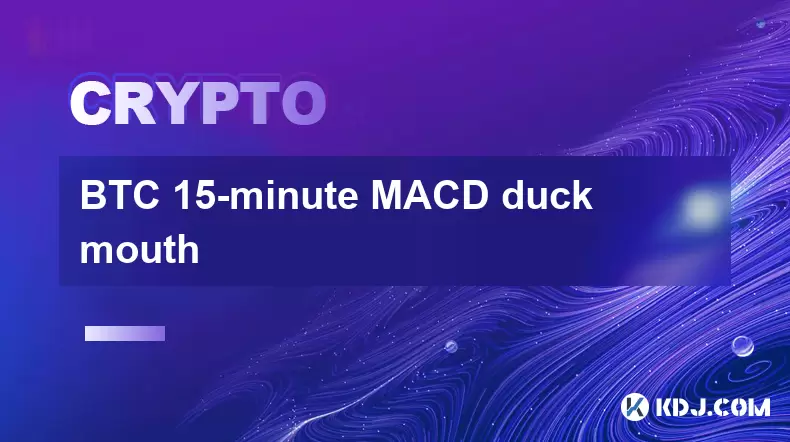-
 Bitcoin
Bitcoin $116300
2.01% -
 Ethereum
Ethereum $3815
5.35% -
 XRP
XRP $3.071
4.46% -
 Tether USDt
Tether USDt $1.000
0.02% -
 BNB
BNB $776.2
1.67% -
 Solana
Solana $173.0
5.70% -
 USDC
USDC $0.9999
0.00% -
 TRON
TRON $0.3389
1.14% -
 Dogecoin
Dogecoin $0.2125
5.92% -
 Cardano
Cardano $0.7627
5.16% -
 Hyperliquid
Hyperliquid $39.00
4.42% -
 Stellar
Stellar $0.4122
5.07% -
 Sui
Sui $3.654
7.22% -
 Chainlink
Chainlink $17.31
5.47% -
 Bitcoin Cash
Bitcoin Cash $582.2
4.28% -
 Hedera
Hedera $0.2521
3.53% -
 Ethena USDe
Ethena USDe $1.001
0.01% -
 Avalanche
Avalanche $22.77
3.47% -
 Litecoin
Litecoin $119.6
2.53% -
 UNUS SED LEO
UNUS SED LEO $8.944
-0.49% -
 Toncoin
Toncoin $3.288
3.95% -
 Shiba Inu
Shiba Inu $0.00001261
3.78% -
 Uniswap
Uniswap $10.12
5.80% -
 Polkadot
Polkadot $3.761
4.23% -
 Dai
Dai $1.000
-0.01% -
 Monero
Monero $285.1
-2.37% -
 Bitget Token
Bitget Token $4.387
1.43% -
 Cronos
Cronos $0.1476
5.88% -
 Pepe
Pepe $0.00001080
4.75% -
 Ethena
Ethena $0.6374
11.58%
BTC 15-minute MACD duck mouth
The BTC 15-minute MACD duck mouth pattern, formed by converging and diverging MACD lines, helps traders anticipate trend reversals for informed trading decisions.
Jun 07, 2025 at 01:14 am

Introduction to the BTC 15-minute MACD Duck Mouth
The BTC 15-minute MACD duck mouth is a trading pattern observed on the 15-minute chart of Bitcoin (BTC) using the Moving Average Convergence Divergence (MACD) indicator. This pattern, often referred to as the "duck mouth," is a visual representation that traders use to anticipate potential trend reversals or continuations. In this article, we will delve into the specifics of the MACD duck mouth pattern, how to identify it on the BTC 15-minute chart, and how traders can use it to make informed trading decisions.
Understanding the MACD Indicator
The MACD is a trend-following momentum indicator that shows the relationship between two moving averages of a security's price. It consists of two lines: the MACD line and the signal line. The MACD line is calculated by subtracting the 26-period Exponential Moving Average (EMA) from the 12-period EMA. The signal line is a 9-period EMA of the MACD line. Additionally, the MACD histogram, which represents the difference between the MACD line and the signal line, can help traders visualize changes in momentum.
Identifying the Duck Mouth Pattern
The duck mouth pattern on the MACD indicator is characterized by a specific shape formed by the MACD line and the signal line. To identify this pattern on the BTC 15-minute chart, traders should look for the following:
- Convergence: The MACD line and the signal line move closer to each other, forming a narrowing gap.
- Divergence: After the convergence, the lines start to diverge, creating a widening gap.
- Shape: The shape formed by the converging and diverging lines resembles a duck's open mouth.
This pattern can signal a potential change in momentum, and traders often use it to anticipate trend reversals or continuations.
Steps to Spot the Duck Mouth Pattern on the BTC 15-minute Chart
To effectively spot the duck mouth pattern on the BTC 15-minute chart, follow these steps:
- Open a Trading Platform: Launch a cryptocurrency trading platform that supports technical analysis, such as TradingView, Binance, or Coinbase Pro.
- Select the BTC/USD Pair: Navigate to the BTC/USD trading pair on the 15-minute chart.
- Add the MACD Indicator: Add the MACD indicator to the chart. Ensure the settings are the standard 12, 26, 9 for the MACD, signal line, and histogram, respectively.
- Monitor the MACD Lines: Observe the MACD line and the signal line for any signs of convergence and subsequent divergence.
- Identify the Duck Mouth: Look for the characteristic shape of a duck's open mouth formed by the MACD line and the signal line.
Interpreting the Duck Mouth Pattern
Interpreting the duck mouth pattern involves understanding its implications for potential price movements. There are two primary scenarios to consider:
- Bullish Duck Mouth: If the duck mouth pattern forms at the bottom of a downtrend, it can signal a potential bullish reversal. Traders might interpret this as an opportunity to enter long positions, anticipating an upcoming uptrend.
- Bearish Duck Mouth: Conversely, if the pattern appears at the top of an uptrend, it may indicate a bearish reversal. Traders could consider this a signal to enter short positions, expecting a downtrend to follow.
Using the Duck Mouth Pattern in Trading Strategies
Traders can incorporate the duck mouth pattern into their trading strategies in several ways:
- Entry Points: Use the completion of the duck mouth pattern as a signal to enter trades. For example, after a bullish duck mouth, enter a long position, or after a bearish duck mouth, enter a short position.
- Exit Points: The pattern can also help identify exit points. If a trader is in a long position and a bearish duck mouth forms, it might be time to exit the trade to avoid potential losses.
- Confirmation with Other Indicators: To increase the reliability of the duck mouth pattern, traders often use it in conjunction with other technical indicators, such as the Relative Strength Index (RSI) or Bollinger Bands.
Practical Example of Trading with the Duck Mouth Pattern
To illustrate how to use the duck mouth pattern in a real trading scenario, let's consider a hypothetical example on the BTC 15-minute chart:
- Scenario: The BTC/USD pair has been in a downtrend for the past few hours. On the 15-minute chart, the MACD line and the signal line start to converge, forming a narrowing gap.
- Observation: As the lines converge, the shape of a duck's closed mouth becomes apparent. Suddenly, the lines begin to diverge, creating a widening gap and forming the duck's open mouth.
- Interpretation: This bullish duck mouth pattern at the bottom of a downtrend suggests a potential reversal.
- Action: A trader might decide to enter a long position at the completion of the duck mouth pattern, setting a stop-loss just below the recent low to manage risk.
- Outcome: If the price of BTC/USD rises as anticipated, the trader could exit the position at a predetermined profit target, such as a resistance level identified on the chart.
Frequently Asked Questions
Q: Can the duck mouth pattern be used on other timeframes besides the 15-minute chart?
A: Yes, the duck mouth pattern can be observed on various timeframes, including 1-minute, 5-minute, 1-hour, and daily charts. However, the reliability and frequency of the pattern may vary depending on the chosen timeframe.
Q: How can traders differentiate between a false signal and a genuine duck mouth pattern?
A: To differentiate between false signals and genuine patterns, traders should look for confirmation from other technical indicators, such as the RSI, volume indicators, or trend lines. Additionally, waiting for the pattern to fully develop before entering a trade can help filter out false signals.
Q: Is the duck mouth pattern effective for all cryptocurrencies, or is it specific to BTC?
A: While the duck mouth pattern is commonly used with BTC, it can be applied to other cryptocurrencies as well. However, the effectiveness of the pattern may vary depending on the liquidity and volatility of the specific cryptocurrency being traded.
Q: Can the duck mouth pattern be used in conjunction with fundamental analysis?
A: Yes, traders often combine technical patterns like the duck mouth with fundamental analysis to make more informed trading decisions. For example, if a bullish duck mouth pattern coincides with positive news about Bitcoin, it could reinforce the decision to enter a long position.
Disclaimer:info@kdj.com
The information provided is not trading advice. kdj.com does not assume any responsibility for any investments made based on the information provided in this article. Cryptocurrencies are highly volatile and it is highly recommended that you invest with caution after thorough research!
If you believe that the content used on this website infringes your copyright, please contact us immediately (info@kdj.com) and we will delete it promptly.
- BlockchainFX, Bitcoin Swift, Crypto Presales: What's the Hype?
- 2025-08-07 19:10:13
- SHIB Community at Crossroads: Shytoshi Kusama's Leadership Under Scrutiny as Elections Loom
- 2025-08-07 18:30:13
- IREN Overtakes: A New King in the Bitcoin Miner Hashrate Race?
- 2025-08-07 16:31:29
- Memecoins Mania: Whales Eye Pepe Dollar (PEPD) as Bonk Cools Off, While MoonBull Hogs the Spotlight!
- 2025-08-07 16:51:17
- Unilabs, PEPE, and Investment Risk: Navigating the Crypto Hype
- 2025-08-07 16:31:29
- Meme Coin Mania: Rug Pulls, CZ-Inspired Tokens, and the Wild West of Crypto
- 2025-08-07 16:57:14
Related knowledge

Can the Bitcoin protocol be changed?
Aug 07,2025 at 01:16pm
Understanding the Bitcoin ProtocolThe Bitcoin protocol is the foundational set of rules that govern how the Bitcoin network operates. It defines every...

What are some common misconceptions about Bitcoin?
Aug 07,2025 at 07:22pm
Bitcoin is Just Like Regular MoneyA widespread misconception is that Bitcoin functions identically to traditional fiat currencies like the US dollar o...

How does Bitcoin handle scalability issues?
Aug 07,2025 at 10:54am
Understanding Bitcoin’s Scalability ChallengeBitcoin’s design prioritizes decentralization, security, and immutability, but these principles come with...

Do you need to understand technology to use Bitcoin?
Aug 07,2025 at 06:17am
Understanding the Basics of BitcoinTo engage with Bitcoin, one does not need a deep understanding of the underlying technology, much like how individu...

Can your Bitcoins be stolen?
Aug 07,2025 at 03:28am
Understanding the Security of Bitcoin OwnershipThe decentralized nature of Bitcoin means that no central authority controls the network, placing the r...

How does Bitcoin compare to gold?
Aug 07,2025 at 03:18am
Historical Context and Origins of Bitcoin and GoldUnderstanding the comparison between Bitcoin and gold begins with their origins and historical roles...

Can the Bitcoin protocol be changed?
Aug 07,2025 at 01:16pm
Understanding the Bitcoin ProtocolThe Bitcoin protocol is the foundational set of rules that govern how the Bitcoin network operates. It defines every...

What are some common misconceptions about Bitcoin?
Aug 07,2025 at 07:22pm
Bitcoin is Just Like Regular MoneyA widespread misconception is that Bitcoin functions identically to traditional fiat currencies like the US dollar o...

How does Bitcoin handle scalability issues?
Aug 07,2025 at 10:54am
Understanding Bitcoin’s Scalability ChallengeBitcoin’s design prioritizes decentralization, security, and immutability, but these principles come with...

Do you need to understand technology to use Bitcoin?
Aug 07,2025 at 06:17am
Understanding the Basics of BitcoinTo engage with Bitcoin, one does not need a deep understanding of the underlying technology, much like how individu...

Can your Bitcoins be stolen?
Aug 07,2025 at 03:28am
Understanding the Security of Bitcoin OwnershipThe decentralized nature of Bitcoin means that no central authority controls the network, placing the r...

How does Bitcoin compare to gold?
Aug 07,2025 at 03:18am
Historical Context and Origins of Bitcoin and GoldUnderstanding the comparison between Bitcoin and gold begins with their origins and historical roles...
See all articles

























































































